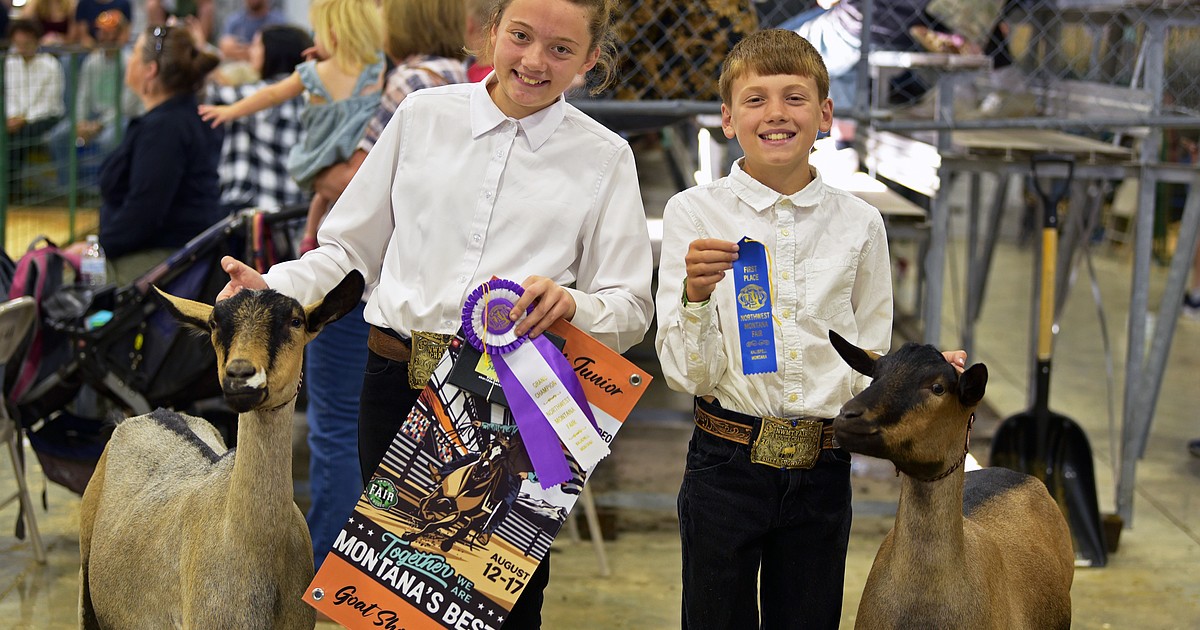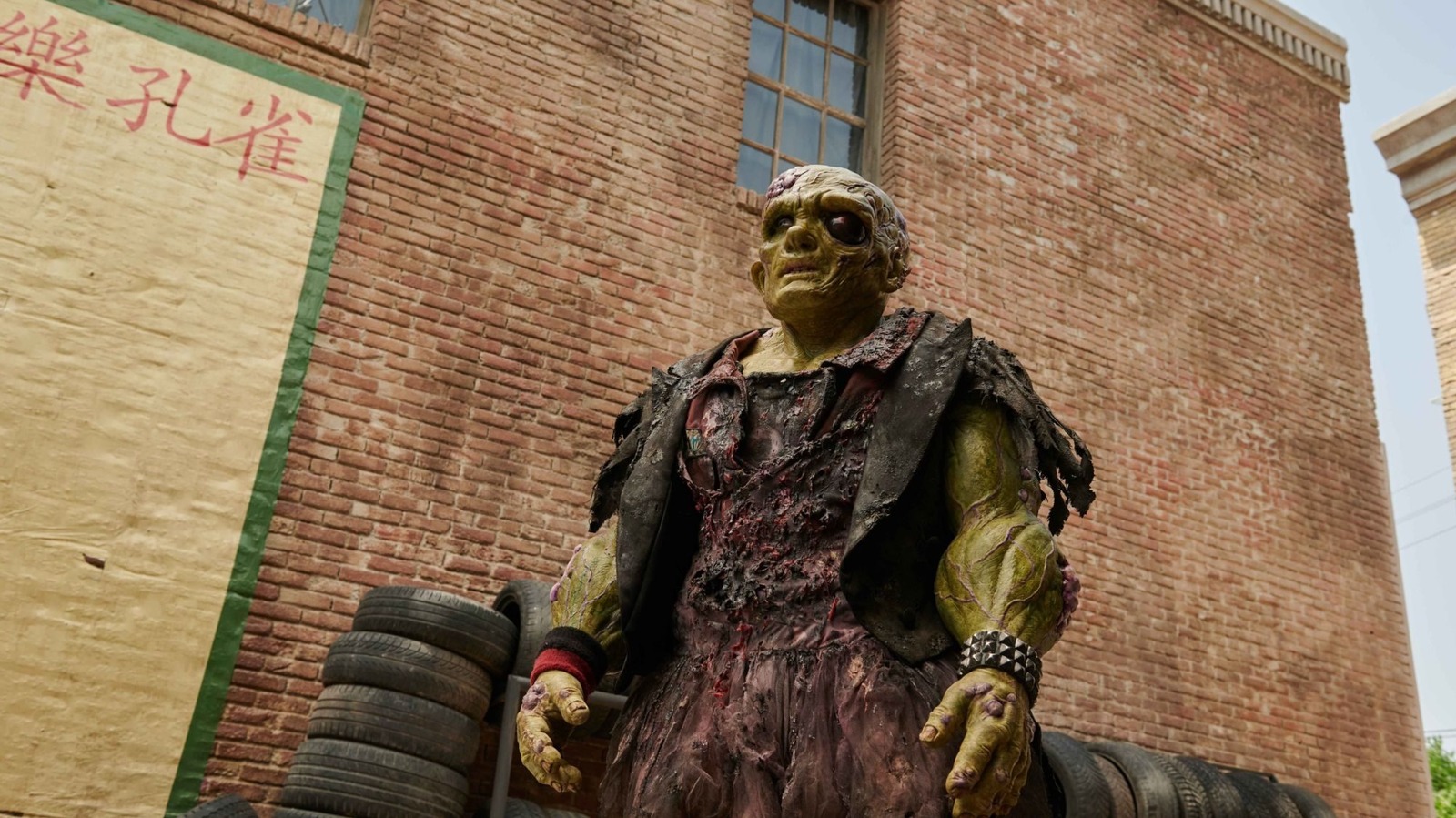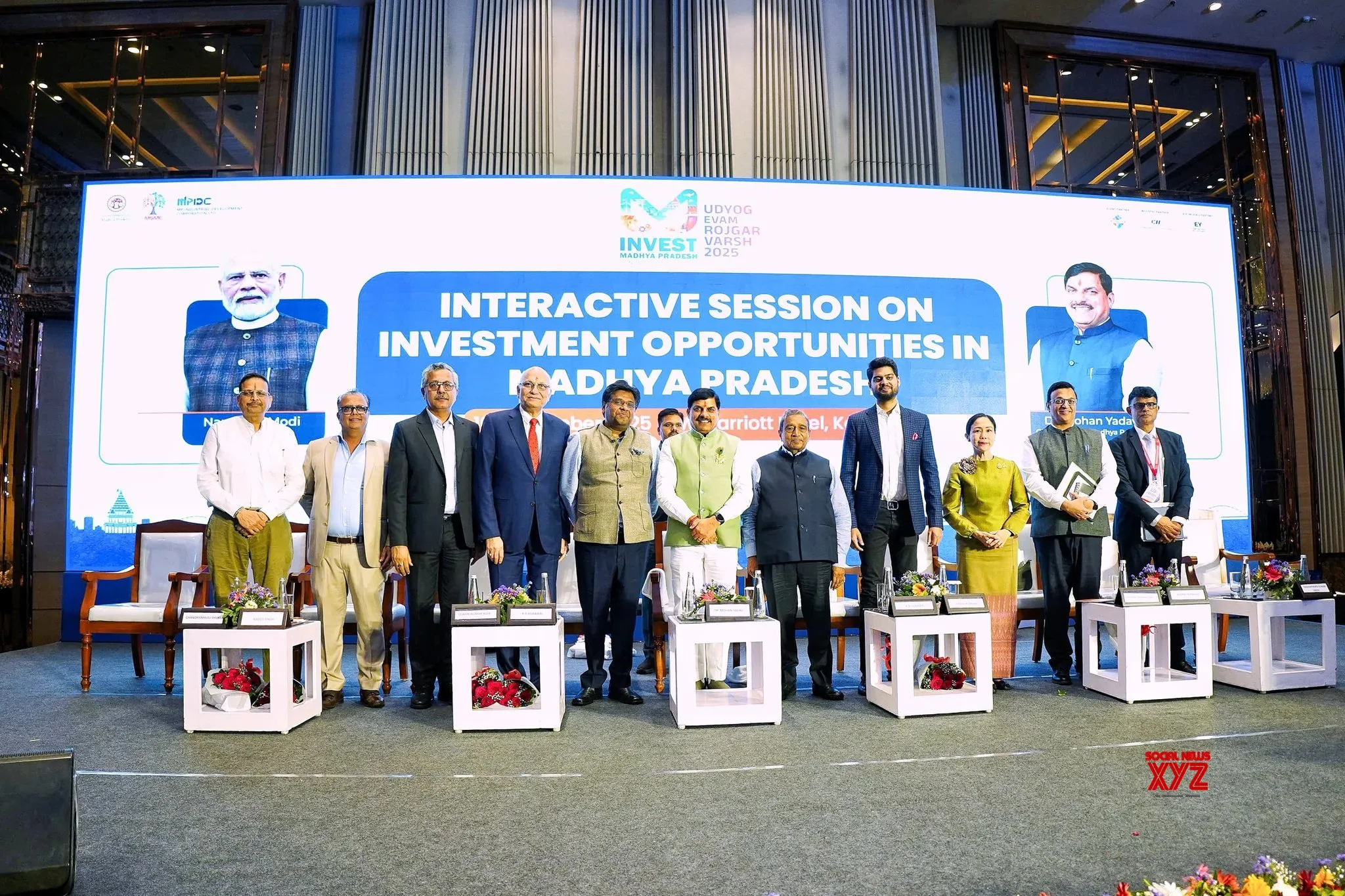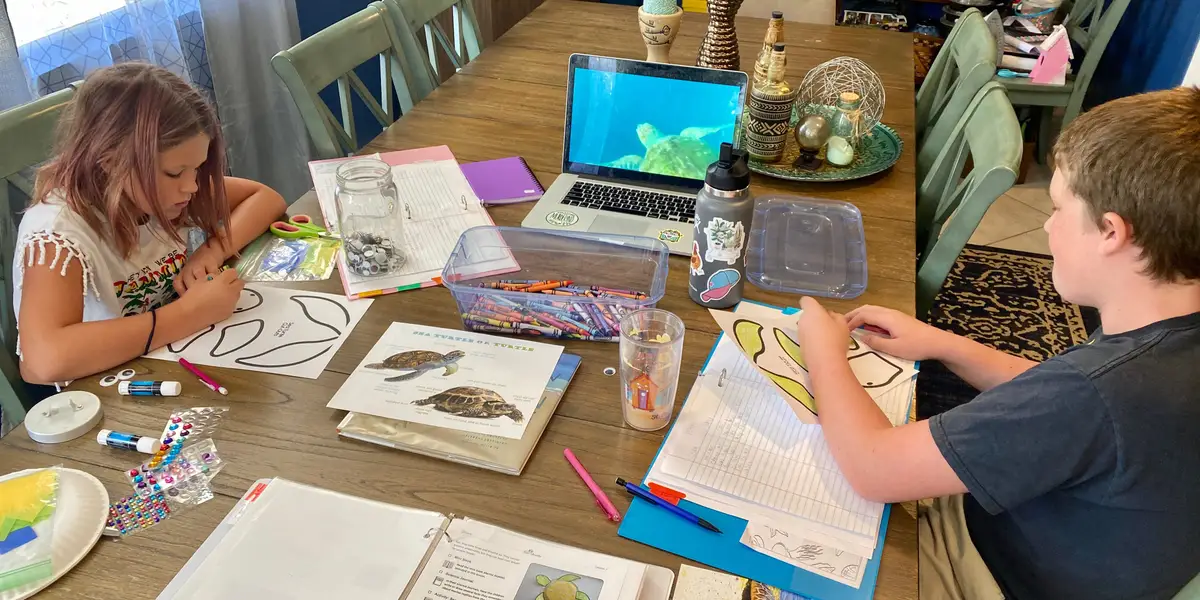Showtime at the ring: Years of hard work by siblings on display at Northwest Montana Fair

Inside the show ring at the Flathead County Fairgrounds, a range of emotions are experienced — excitement and nervousness, elation and exasperation, exhaustion and gratitude.
It’s a pivotal moment for youth in 4-H and FFA when they enter the ring at the Northwest Montana Fair and Rodeo to show the livestock they’ve spent months, and in some cases years, raising and training. They all enter as contenders and hope to exit as champions.
Among the competitors are the Brist siblings, Madison, Emma, Naomi and Garrett. This year, they showed 22 animals — five sheep, nine goats and eight calves. It took three trailer loads of animals and one of equipment to get everything to the fair from their family farm in Marion.
The livestock have been groomed regularly prior to the fair, but in the hectic half-hour before showtime, there is always time for a final brushing, blow-dry, trim or spray of show shine to add luster to the animal’s coat. All these efforts are to enhance an animal’s appearance and highlight its physique.
The youths have their own show attire as well — crisp, bright white button-down shirts, if in FFA, a blue corduroy jacket with a scarf or tie and black pants.
In the ring, the youths have a focused gaze fixed on the judge while simultaneously guiding lambs, goats and cattle. The judges stand back, observing how the youths handle and respond to their animals during both relaxed and tense moments.
Even with all the practicing and training and putting forward their best efforts, there are still uncontrollable factors like how an animal is feeling on a given day. Even for seasoned competitors like Madison, 17, who has spent a decade showing animals, this year posed a challenge as steers became irritable from the heat and change in environment.
Still, she took it in stride, coming away with sixth place overall among all market steer competitors with her steer, Bagel.
“As we say, my dance partner in the show ring, he was a little bit tired and crabby from standing all morning and getting fit for the show, so he didn’t really want to cooperate, but I’d say overall, I really enjoyed it and it was fun,” Madison said after showing.
BEFORE ANNOUNCING the winners, judges speak with each competitor, asking questions about their livestock project and providing feedback. The fruits of their labor are prized belt buckles, which 4-Hers and FFA members wear with pride. Ribbons and banners are promptly displayed on the animal stalls.
The Brist children brought home both, earning grand and reserve champion in multiple categories and a multitude of blue ribbons. By Sunday morning, Aug. 17, the Trade Center activity had calmed down as the siblings sat in front of the goat stalls to recap the week.
For Emma, a highlight was winning reserve grand champion in junior sheep showmanship with her sheep, Juanita, and her sheep, Snow, ranked third overall, among the ewe born and fed entries.
“I’ve never won anything in sheep showmanship,” Emma said, noting that the animal is one of the more challenging to show. “Because they’re smart.”
Naomi won reserve grand champion in junior sheep showmanship. Her market lamb, Westly, ranked 12th overall, among all the market lamb entries.
The Brist family farm, Lone Lake Farm, has roots in raising sheep. At one point, roughly 500 roamed the pastures.
Garrett showed a steer for the first time this year.
“I got my first banner for showing a calf,” Garrett said, placing fourth overall in junior novice beef cattle showmanship with Biscuit.
Emma and Naomi took the top spots in purebred breeding female with their heifers Cherry and Rosie. Emma won grand champion and Naomi, reserve grand champion.
Overall, in junior beef showmanship and purebred breeding female, Naomi ranked third among all the competitors.
In goat competitions, Naomi’s confidence in the ring paid off, winning grand champion in junior goat showmanship and junior costume, despite it being her first time showing her goat, Nutmeg, at the fair, after retiring her longtime show goat.
Emma had the grand champion junior doe, Sapphire and Garrett, the reserve junior doe champion, Hershey. Garrett and Hershey also ranked third overall in junior goat showmanship.
In senior goat breeding interviews, Madison was the grand champion and Emma reserve grand champion. Garrett’s goat Hershey ranked third overall among the junior goat showmanship competitors.
ALL THE projects are a financial investment and there is an administrative side to 4-H and FFA livestock projects where the youth track animal health and expenses. The livestock sale is where many 4-H and FFA members look to make a small profit, or at minimum, break even after covering the costs of raising the animal.
Naomi was an outlier this year when her market lamb fetched about $20 per pound at the livestock sale. Last year, her market lamb sold for about $12 per pound.
The market livestock is often purchased by businesses around the valley that support the youths’ endeavors.
Typically, all or a portion of profits are reinvested in next year’s livestock projects. Last year, Naomi purchased a lamb from a fancy breeder for roughly $1,300 and ultimately spent $1,458 after expenses, which she didn’t recoup at the livestock sale.
The expense of purchasing animals has led the Brist family to invest in breeding their own sheep and cattle.
“I bought a heifer every year since I started showing animals and it’s all starting to pay off because this year I have five calves to sell and I can make like $1,000 off of each or more,” Madison said.
AT THE conclusion of the fair, the cycle of life comes full circle for those raising market animals. It’s one of the toughest parts, seeing the empty stalls and loading the animals onto the trailers for slaughter.
This is especially true for the younger children, Madison said. The elder Brist children have gone through the experience for several years.
To be completely detached is nearly impossible, according to Emma, and her sisters agree.
“It’s hard every year,” Naomi said.
“Some people say that it gets easier, but I have never had an easy time,” Emma added.
A soft spot remains for the animals they’ve spent months closely caring for — even difficult animals. The Brist siblings talk animatedly about the variety of personalities and quirks the animals had and the joy and laughter they brought to daily life.
“You’re going out there every morning, every night, sometimes the middle of the day, sometimes, like five times a day, you’re spending with them. It’s almost like they’re just like your best friend,” Madison said.
Knowing they’re raising animals for meat is bittersweet.
“I keep joking I need to quit because of how hard it is to let them go, but it is well worth it to do because it teaches you more about the animals and gives you more respect for them because,” Emma said, pausing, “the longer you know the animal. The more humanlike they can seem.”
Goats are not sold at the fair, so the Brists look to other avenues to cull their growing herd. They sold more than a dozen as pack animals, to the children’s delight, knowing they’ll be hitting the trails.
What helps counterbalance saying goodbye to the market livestock are the animals they get to bring home to use for breeding.
Madison said she’s grateful for the chance to give market animals the chance to live on a farm and be taken care of. It’s a life that typical commercial livestock don’t experience.
“I like taking care of something else, and knowing that, because of me, they’re having a better life,” she said.
However, it’s still difficult to say goodbye. Snippets of memories of a steer with a sweet personality or a lamb that wasn’t so smart come back at times.
“You always carry a little piece of that animal with you,” Madison said, cradling her arms.
Before the fair officially closes, plans for next year’s projects have already started.
Emma is planning on showing a calf bred on the family farm. Naomi again plans to show a lamb bred on the farm. All of them will be showing goats.
Madison plans to get a steer from a breeder for her next project, and she’ll continue to raise the calf she brought to this year’s fair. Next year will be the Flathead High School senior’s last showing at the Northwest Montana Fair as she ages out.
“My goal is to do better than this year,” Madison said. “I did do really good this year, but my goal is to just step it up a little notch because it is my senior year — go out with a bang.”



